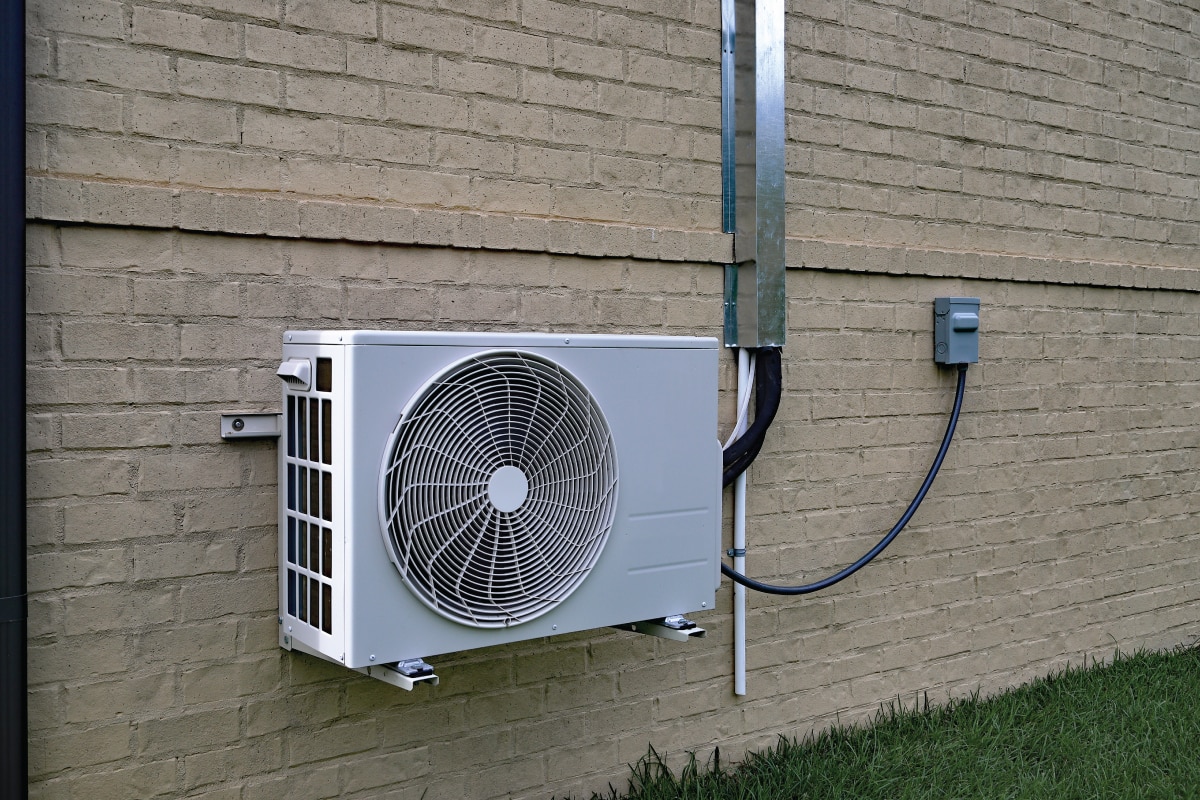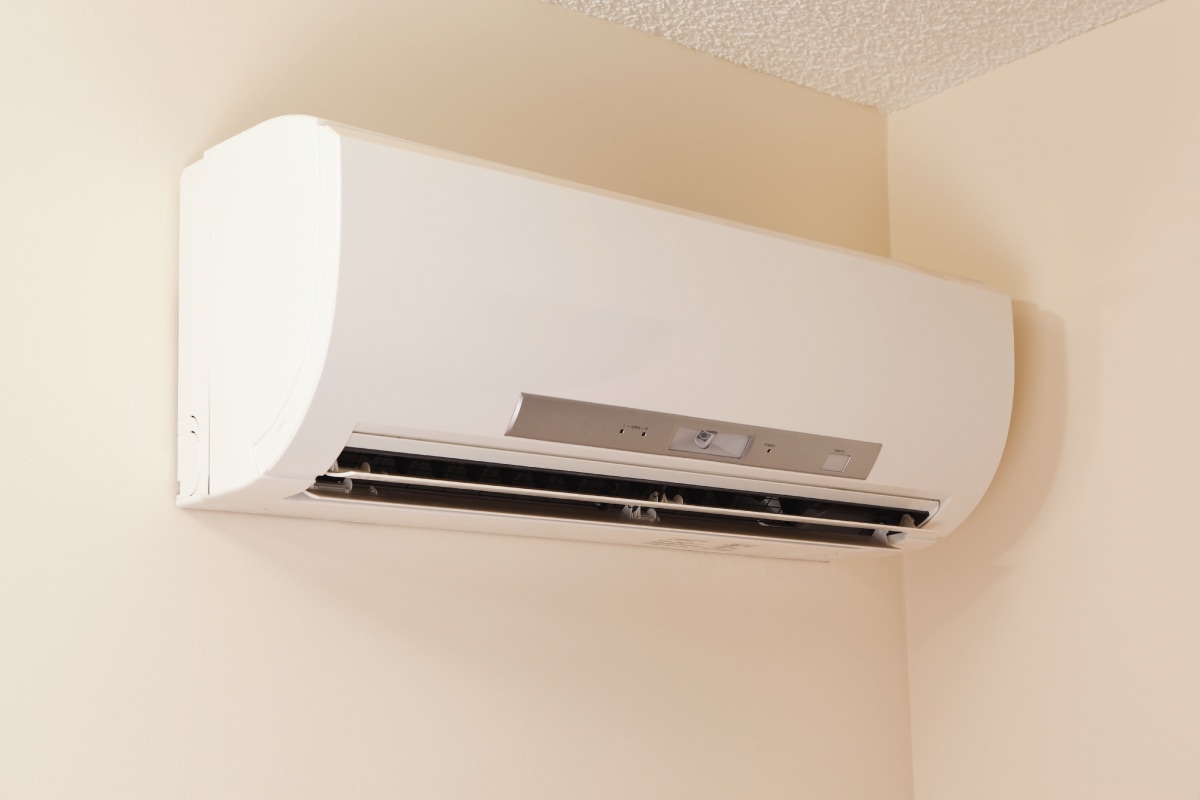Ductless air conditioners (aka "mini-splits") offer an easy and efficient way to keep your home cool. The decision to install a mini-split will typically involve different factors for every homeowner. A few important considerations include the size of your home, the size and number of rooms that you'd like too cool, and the setup of your current HVAC system. But how many square feet can one ductless air conditioner system cool?
A large ductless system with a BTU of 36,000 can effectively cool a room measuring up to 1,500 total square feet, while smaller units usually start at around 9,000 BTUs and can cool approximately 350 square feet of space (the size of approximately 2-3 bedrooms).
Ductless air conditioner systems, similar to other types of AC units, come in various sizes and can be configured for different types of home or office HVAC setups. It's important to know the capacity of the ductless unit needed for your home before purchasing a mini-split system. In this post, we will discuss some of the factors involved in determining this. Let's take a look.

Cooling Capacity
The cooling capacity of a ductless air conditioner system depends mostly on the size of its heating/cooling pump, from which its output of heating and cooling capability is measured in BTUs (British Thermal Unit). The BTU of an air conditioner (or heating system) refers to the amount of heat needed to raise the temperature of a pound of water by 1 degree Fahrenheit.
How Big Of A Ductless AC Do You Need?

To determine the capacity needed for your mini-split system to cool your home effectively, you will first need to know the total number of square feet of each room that you are looking to cool. The capacity of a ductless air conditioning system is measured in BTUs. Mini-split AC systems work very efficiently at delivering air throughout a home, which is why you may notice that their BTU rating is typically lower than that of window AC units.
Below are common calculations for estimating BTU capacity based on a room's square footage:
350-500 square feet = 9,000-12,000 BTUs 750-1,000 square feet = 18,000-24,000 BTUs 1,250-1500 square feet = 30,000-3600 BTUs
While the above estimates are fairly standard in the HVAC industry, it's best to have an experienced HVAC technician perform a walkthrough inside your home to take a look at other factors. The technician can then determine the ideal capacity for your ductless air conditioner system.
Now that we've covered how to size a ductless system for room sizes, we'll dive into the other space-related factors that can come into play when determining the capacity of your ductless system.
Insulation Levels
HVAC technicians will typically do a quick check of your home's current insulation during their walk-through for mini-split insulation. If your home is fairly new or has recently been remodeled, there is a good chance that the insulation between the walls is sufficient. Installing new insulation inside the walls can help to increase the efficiency of a mini-split unit in each room, but this is typically recommended for older homes.
Good insulation ensures that cool air isn't able to escape through the walls in your home, providing you with optimum temperature regulation -- as well as minimizing the capacity of the pump needed for your ductless system.
Room Sunlight
If you have a room that receives a lot of sun or has skylights, it can easily increase the cost of cooling and you'll likely need for a bigger pump in the room. During a walkthrough, most HVAC technicians will measure the light levels within the room based on the time of the day of their visit.
Rooms that receive more sunlight are going to require more energy to cool, which means that you may want to also consider additional cooling options such as blackout shades or other coverings.
Number of Windows and Doors
Windows and doors in a room will often cause a bit of inefficiency when it comes to heating and cooling a space. The reason is that they allow for air to escape from the room through cracks and crevices. A room with great insulation and just one window will hold temperatures better than a room with insulation gaps and three or more windows.
For example, basements are usually easier to cool and require less energy, as they are typically larger areas with several windows and lots of open space. If your home is full of large spaces that contain several windows indoors, your ductless system may require more air handlers and a larger pump to cool it. Also, if you have doors and windows that are particularly old or are badly insulated, this can drive up the capacity requirements for your ductless air conditioning system.
Do You Need A Ductless AC Unit In Every Room?

Installing a ductless unit in every room of your home is not needed, as the outdoor condenser unit can be linked to multiple units inside the home. In most modern or traditional homes, this means installing the indoor units in the main living areas. If the home is on the larger side, in which case more inside units would be needed, you can also have an additional outdoor condenser unit (for a total of 2) to help effectively cool the home.
Several homeowners use mini-split systems to set up heating and cooling "zones" in their home. A single-zone ductless system can cool the interior area of your home utilizing one indoor unit and one outdoor condensing unit. This type of setup is popular for homeowners with rooms that lack the ductwork needed for central air conditioning. The most important consideration with single-zone air conditioners is ensuring that the ductless system has the capacity to cover the square footage of the entire room.
A multi-zone ductless system works the same way as a single zone system but has the ability to cool down more parts of your home. Each zone (or indoor unit) connects to the outdoor condensing unit through a refrigeration line. Most homes using this setup will have a maximum of up to four indoor zones.
If your home is not equipped with central air conditioning, a multi-zone system can be a great option to cool the different areas within it, especially if you have multiple floors. This also makes multi-zone models ideal for small business offices, apartment buildings, and basements. An individual outdoor unit is equipped to handle all of the interior units, with the only exception being that they all aren't operating at the highest level at the same time, as this could overburden the outdoor unit.
What Happens If AC Is Oversized?
A properly-sized ductless pump is crucial for a system's performance. A mini-split system that's correctly sized can efficiently and effectively cool down your home using the least amount of energy. However, when the pump is oversized, it can cause mechanical issues with your unit, ultimately resulting in repair and replacement costs.
Oftentimes, homeowners will assume that getting a bigger ductless pump than needed will be better for their heating or cooling needs. This is not the case. The main issue with an oversized pump is "short cycling." Short cycling occurs when the unit turns off and on repeatedly within sporadic, short periods of time. This is an issue that can lead to premature wear and tear of the AC unit. When this occurs, the ductless system will malfunction and ultimately fail.
Another issue is that of humidity. Ductless units also work as dehumidifiers. But if the AC unit short-cycles often and frequently, its efficiency in removing humidity will be lessened. As a result, the humidity levels in your house can become higher than normal.
It's also important to note that you will pay more money for a bigger pump as the price of pumps is directly related to the size and capacity of the unit. You also risk having a higher energy bill because the bigger pump will require more electricity to match its capacity.
What Happens If The Unit Is Under-sized?
If a ductless system is smaller than the requirements, it will also be inefficient. A ductless pump that is too small can cause temperature deficiencies in your living spaces. While the unit may be working fine, you'll quickly notice that your home is not getting warm or cool enough.
The mini-split system will continue to consume energy without providing the level of comfort or temperature that you're expecting. You may also notice warm spots in certain areas of your home, as the unit simply isn't big enough to supply cold air to those locations efficiently. As the pump struggles to make up for its inadequacy to cool your home, the unit will wear out faster than it would had it been correctly sized.
What Is The Difference Between Ductless And Mini-Split Air Conditioners?
Mini-splits and ductless air conditioners are actually names for the same type of AC system, the names are just used interchangeably. Ductless air conditioner systems are referred to as mini-splits because they are just smaller versions of a traditional central AC system, which are also known as "split systems" and have the same indoor air handler and outside condensing unit.
In Closing
Taking the time to consult with a professional HVAC technician can ensure that your ductless mini-split system is appropriately sized for your home and the areas that you'd like to cool. Hopefully this guide has helped you to better understand the factors involved with sizing a ductless system and why it's important.
Before you go, be sure to take a look at our other post related to other HVAC systems:
